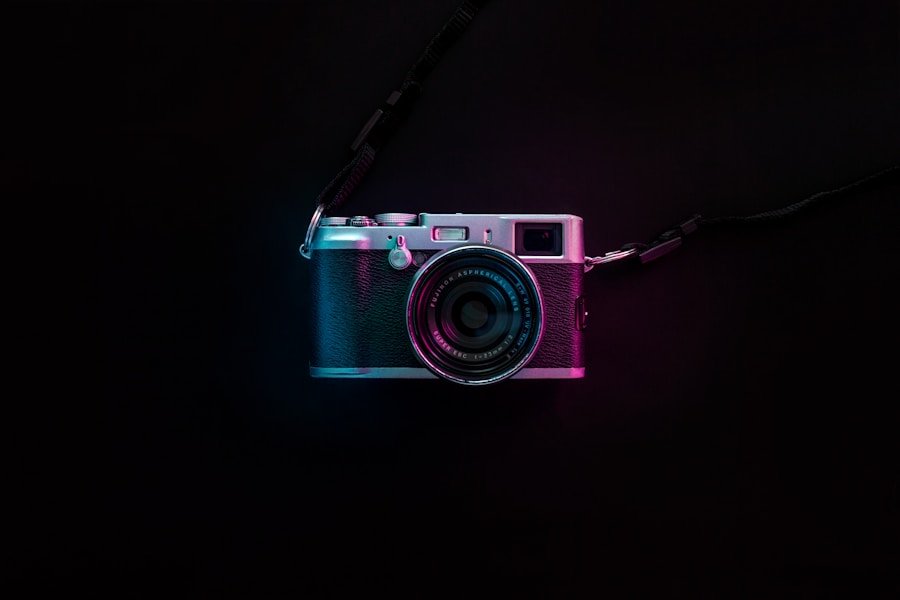When it comes to digital cameras, one of the most important decisions a photographer can make is choosing between a full-frame and a crop sensor camera. The main difference between the two lies in the size of the image sensor. A full-frame camera has a sensor that is the same size as a 35mm film frame, while a crop sensor camera has a smaller sensor, typically around two-thirds the size of a full-frame sensor.
Full-frame cameras are known for their superior image quality, especially in low light conditions. The larger sensor allows for better light sensitivity and less noise, resulting in sharper and more detailed images. On the other hand, crop sensor cameras have a smaller sensor, which means they have a narrower field of view compared to full-frame cameras. This can be both an advantage and a disadvantage, depending on the type of photography you are doing.
Overall, understanding the basics of full-frame vs. crop sensor cameras is crucial in making an informed decision when purchasing a new camera. Each type has its own set of advantages and disadvantages, which we will explore in the following sections.
Advantages and Disadvantages of Full-Frame Cameras
Full-frame cameras have several advantages that make them a popular choice among professional photographers. One of the main advantages is their superior image quality. The larger sensor size allows for better light sensitivity and less noise, resulting in sharper and more detailed images, especially in low light conditions. Additionally, full-frame cameras have a wider field of view, which is beneficial for landscape and architectural photography.
However, there are also some disadvantages to consider when it comes to full-frame cameras. One of the main drawbacks is their size and weight. Full-frame cameras are typically larger and heavier than crop sensor cameras, making them less portable and more cumbersome to carry around. Additionally, full-frame cameras tend to be more expensive than crop sensor cameras, both in terms of the camera body and compatible lenses.
Advantages and Disadvantages of Crop Sensor Cameras
Crop sensor cameras also have their own set of advantages and disadvantages. One of the main advantages of crop sensor cameras is their smaller size and weight. This makes them more portable and easier to carry around, which is beneficial for travel and street photography. Additionally, crop sensor cameras are generally more affordable than full-frame cameras, making them a popular choice for hobbyist photographers.
However, there are also some disadvantages to consider when it comes to crop sensor cameras. One of the main drawbacks is their narrower field of view compared to full-frame cameras. This can be limiting for certain types of photography, such as landscape and architectural photography. Additionally, crop sensor cameras may not perform as well in low light conditions, as they have a smaller sensor size and may produce more noise in high ISO settings.
Choosing the Right Camera Body for Your Photography Needs
When it comes to choosing the right camera body for your photography needs, there are several factors to consider. One of the most important factors is the type of photography you will be doing. If you are primarily interested in landscape or architectural photography, a full-frame camera may be the best choice due to its wider field of view and superior image quality. On the other hand, if you are interested in travel or street photography, a crop sensor camera may be more suitable due to its smaller size and weight.
Another factor to consider is your budget. Full-frame cameras tend to be more expensive than crop sensor cameras, both in terms of the camera body and compatible lenses. If budget is a concern, a crop sensor camera may be a more affordable option that still offers good image quality and performance.
Ultimately, choosing the right camera body for your photography needs requires careful consideration of your shooting style, budget, and desired image quality. It may also be helpful to test out different camera bodies before making a final decision.
Lens Compatibility: Full-Frame vs. Crop Sensor Cameras
Another important factor to consider when choosing between a full-frame and crop sensor camera is lens compatibility. Full-frame cameras are compatible with both full-frame and crop sensor lenses, while crop sensor cameras are only compatible with crop sensor lenses. This means that if you have a collection of lenses from a previous crop sensor camera, they may not be fully compatible with a new full-frame camera.
Additionally, using crop sensor lenses on a full-frame camera may result in vignetting or reduced image quality due to the mismatch in sensor size. On the other hand, using full-frame lenses on a crop sensor camera may result in a narrower field of view, as the lens is designed for a larger sensor size.
It’s important to consider your existing lens collection and future lens purchases when choosing between a full-frame and crop sensor camera. If you already have a collection of lenses that are compatible with a specific type of camera, it may be more cost-effective to stick with that type of camera body.
Budget Considerations: Full-Frame vs. Crop Sensor Cameras
Budget considerations play a significant role in the decision-making process when choosing between a full-frame and crop sensor camera. Full-frame cameras tend to be more expensive than crop sensor cameras, both in terms of the camera body and compatible lenses. This can be a major factor for photographers who are working within a limited budget.
However, it’s important to consider the long-term investment when it comes to purchasing a new camera. While full-frame cameras may have a higher upfront cost, they often offer superior image quality and performance, which can be beneficial in the long run. Additionally, full-frame cameras have better resale value compared to crop sensor cameras, which may offset some of the initial cost.
On the other hand, if budget is a concern, crop sensor cameras may be a more affordable option that still offers good image quality and performance. It’s important to weigh the upfront cost against long-term benefits when making a decision based on budget considerations.
Making the Switch: Transitioning from Crop Sensor to Full-Frame Cameras
For photographers who are considering making the switch from a crop sensor to a full-frame camera, there are several factors to consider. One of the main considerations is lens compatibility, as mentioned earlier. If you have a collection of crop sensor lenses, you may need to invest in new full-frame lenses in order to fully utilize the capabilities of a full-frame camera.
Additionally, it’s important to consider the learning curve when transitioning from a crop sensor to a full-frame camera. Full-frame cameras often have more advanced features and settings that may require some time to master. It’s important to take the time to familiarize yourself with the new camera body and its capabilities before diving into professional work.
Overall, making the switch from a crop sensor to a full-frame camera requires careful consideration of lens compatibility, budget, and the learning curve associated with using a new camera body. It’s important to take your time and do thorough research before making the transition in order to ensure that it aligns with your photography needs and goals.
In conclusion, understanding the differences between full-frame and crop sensor cameras is crucial in making an informed decision when purchasing a new camera. Each type has its own set of advantages and disadvantages that should be carefully considered based on your shooting style, budget, and desired image quality. Whether you choose a full-frame or crop sensor camera, it’s important to take your time and do thorough research before making a final decision that aligns with your photography needs and goals.








